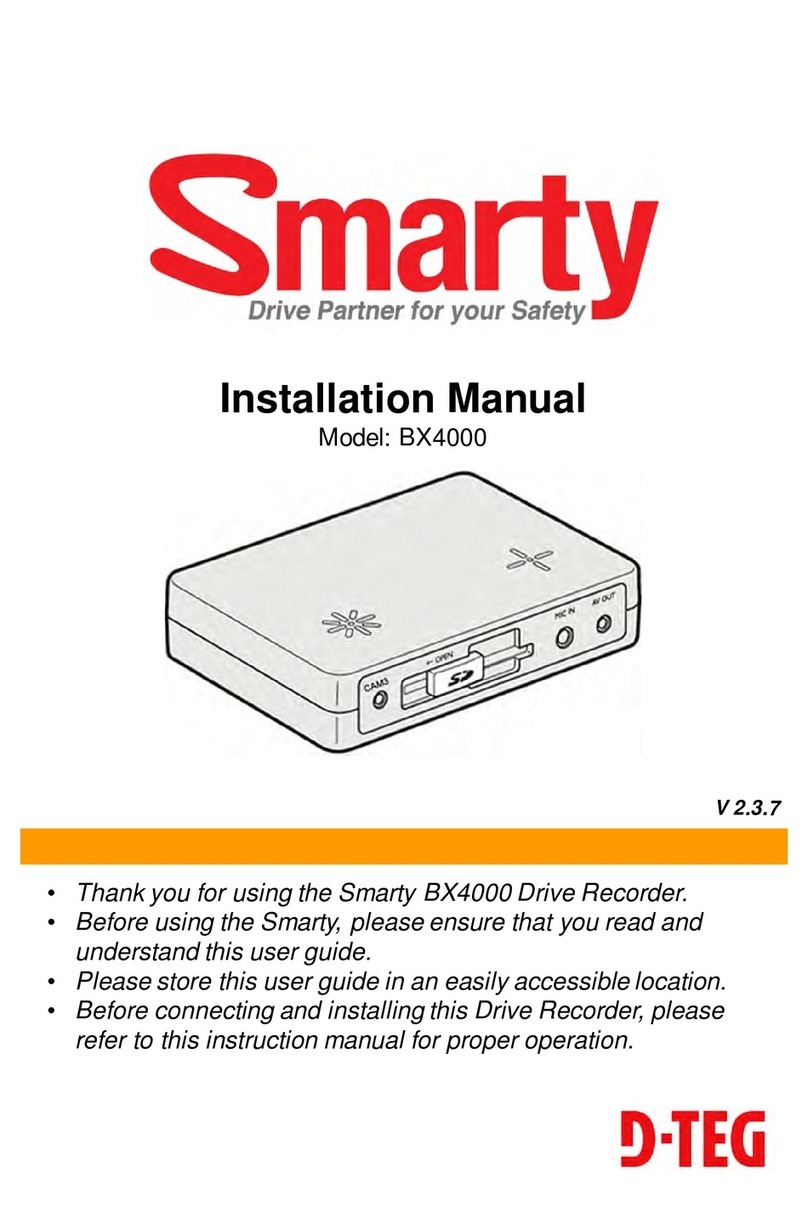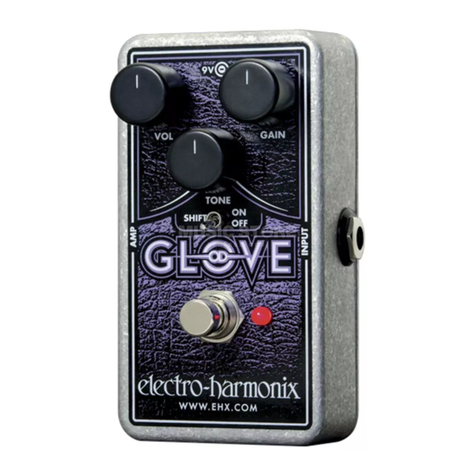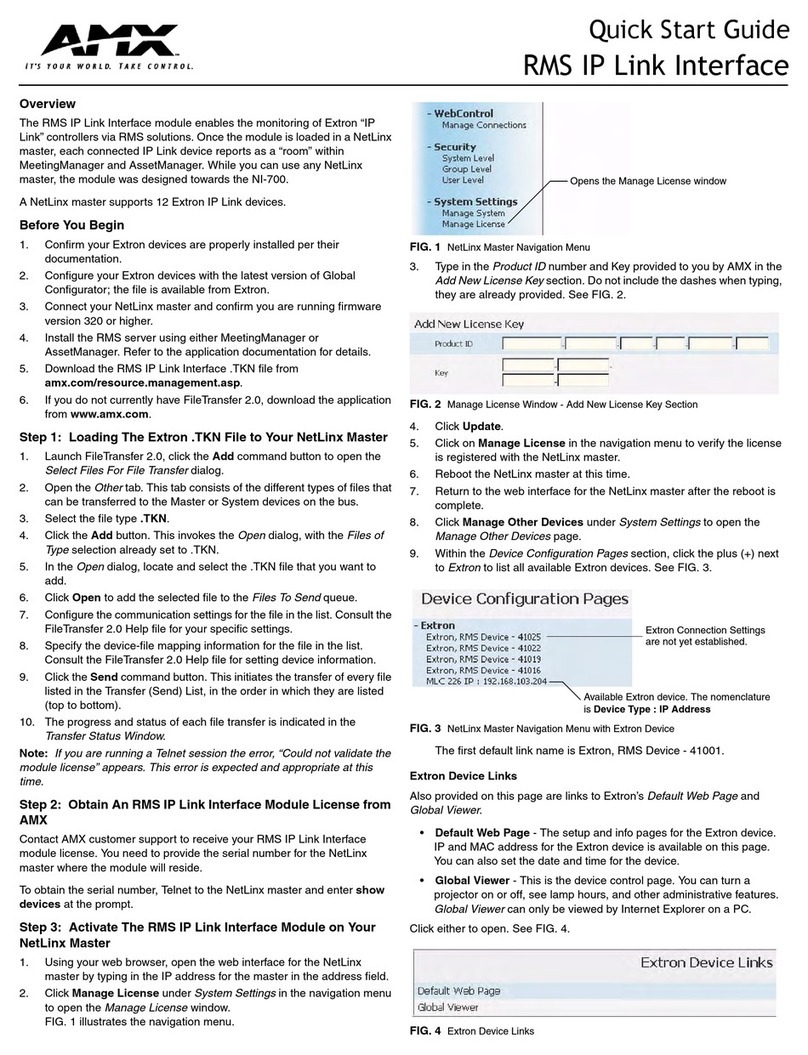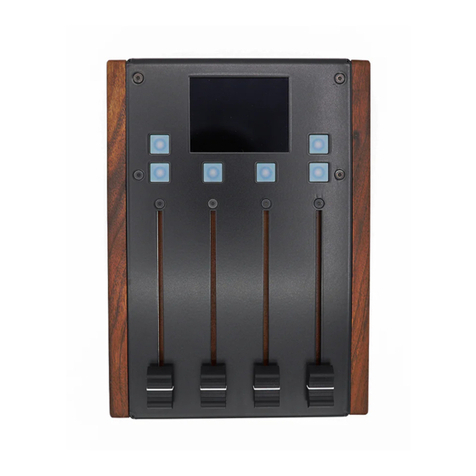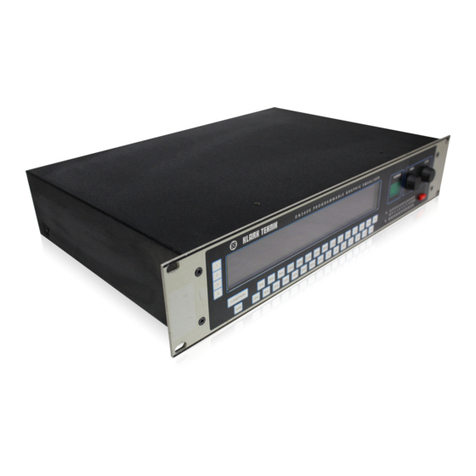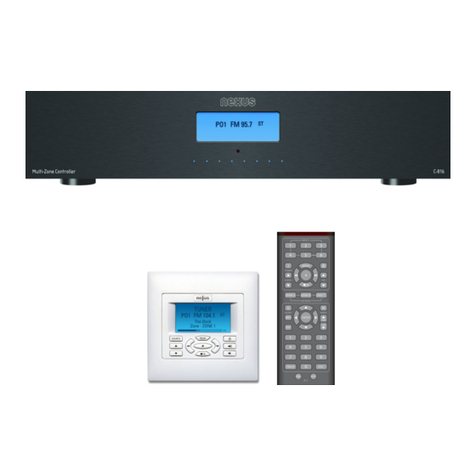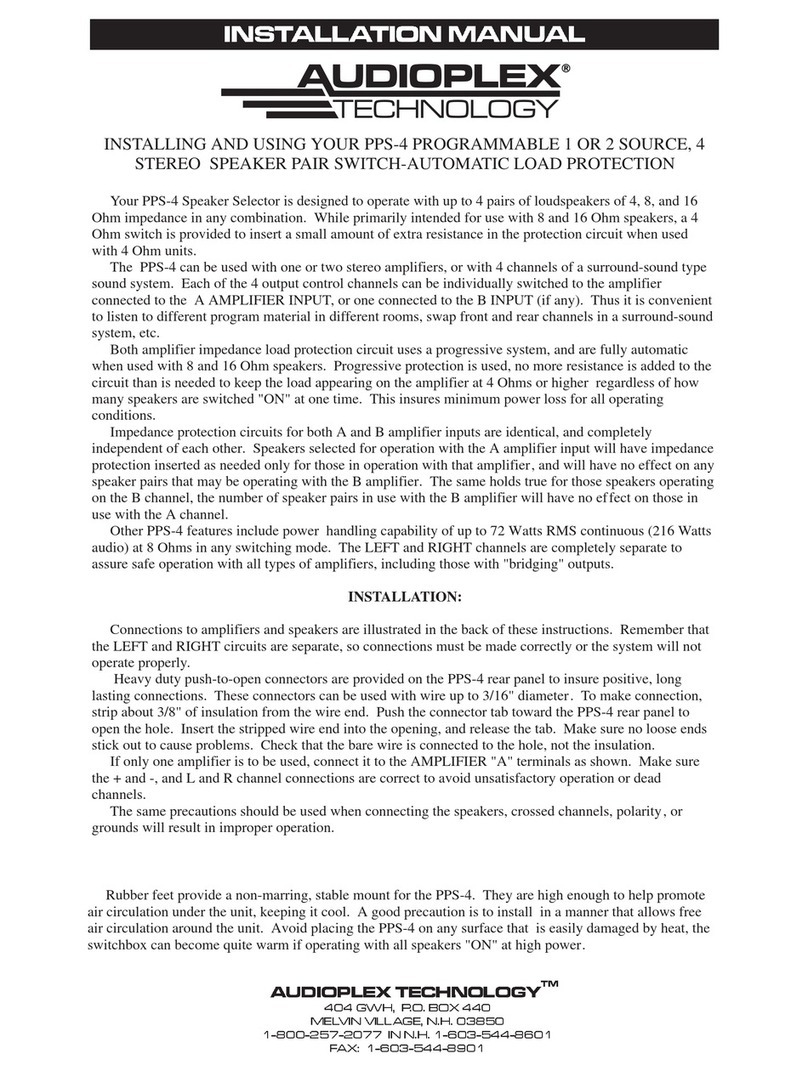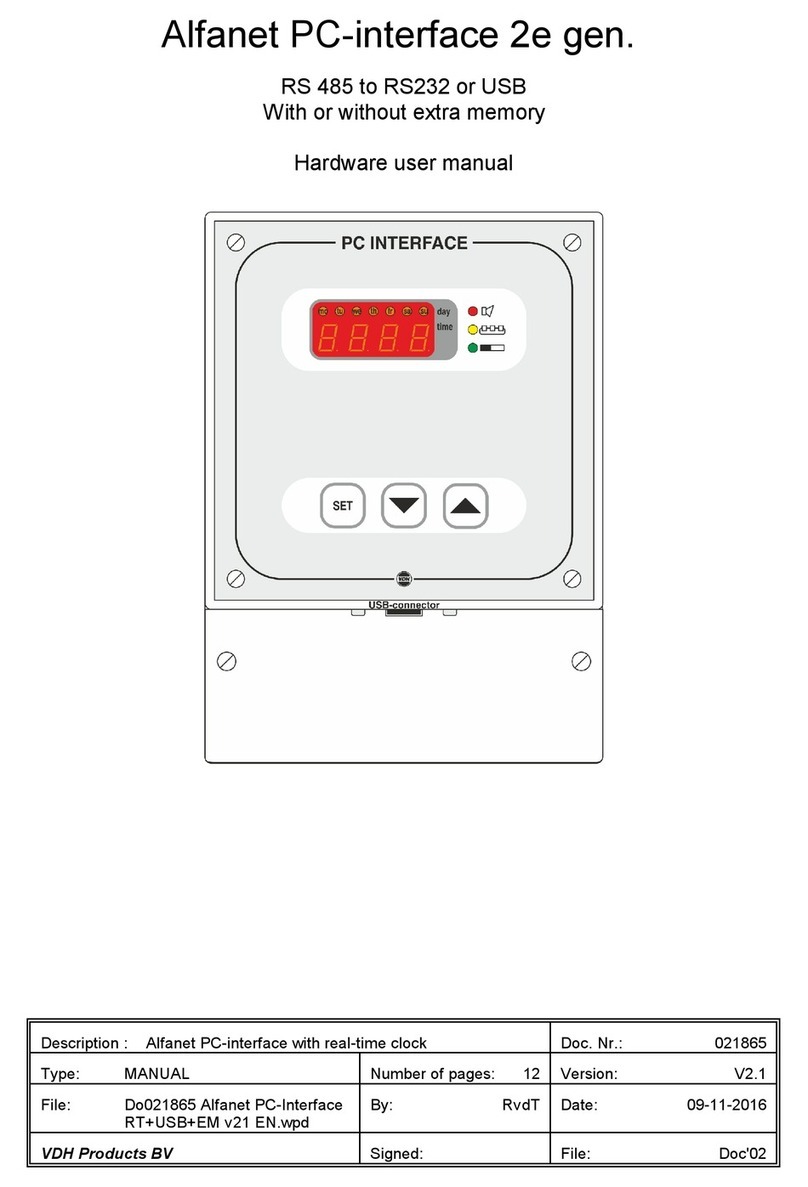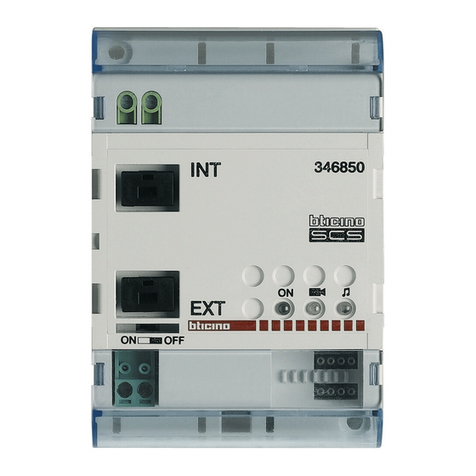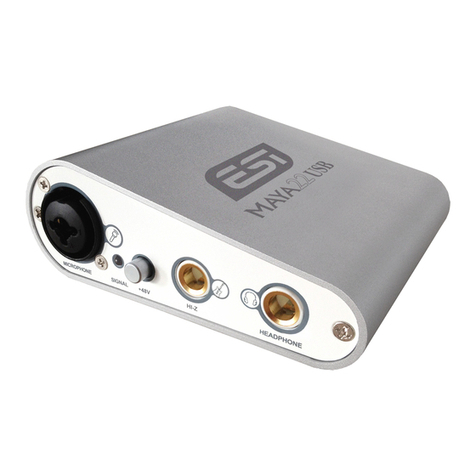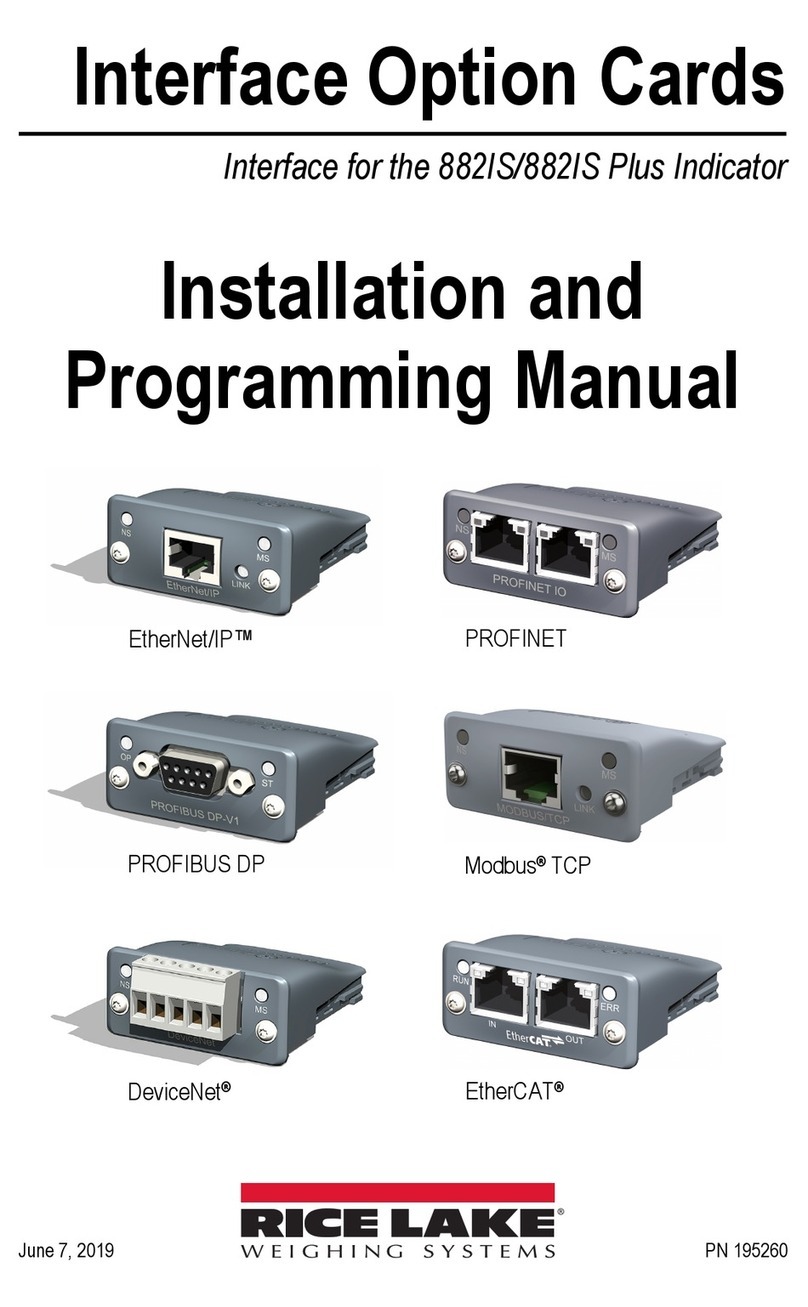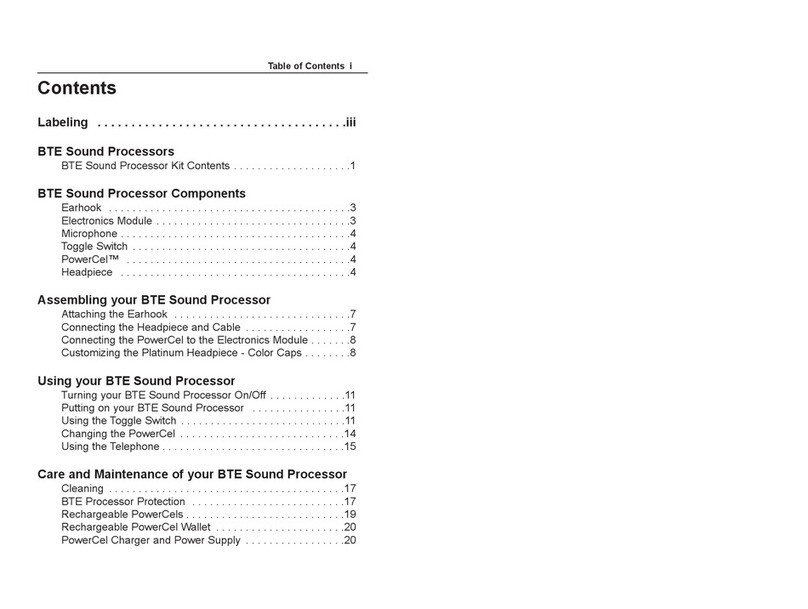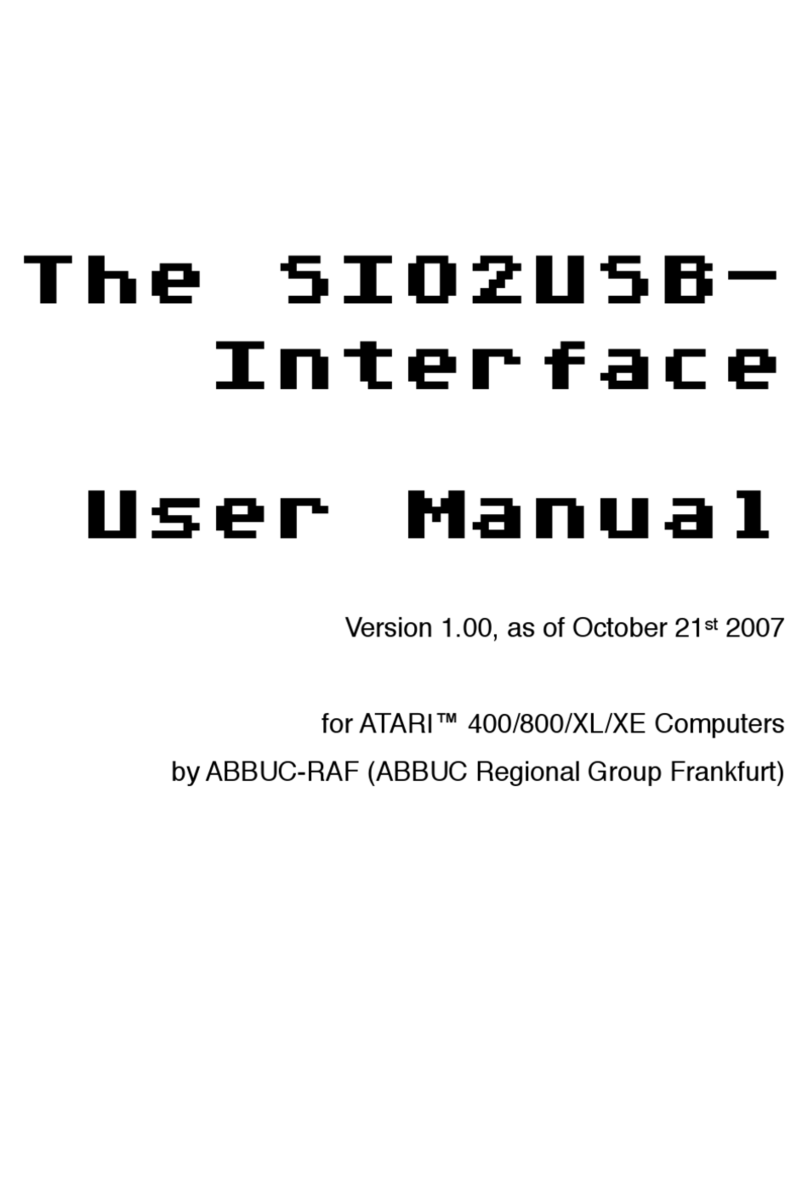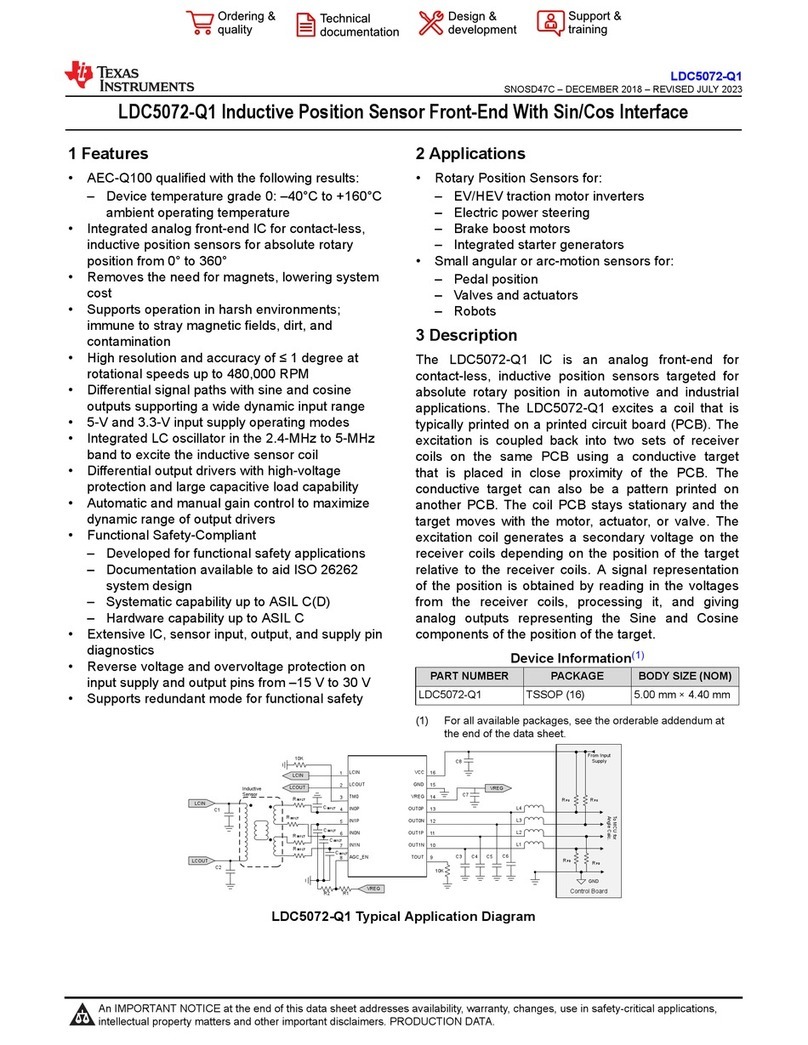Elektron MonoMachine SFX-6 Installation and operating instructions

Tips for Using the Monomachine
(Using Information from the Elektron-Users Forum)
Compiled by tIB

Tips for Using the Monomachine
Version 1.01
This document has been compiled using posts from the
Elektron-Users website.
Apologies for not listing names, it proved to be too time
consuming. f you have any suggestions for things that are
missing, have spotted any glaring mistakes or you have something
you would like to add then PM me at the Elektron-Users forum and
’ll update.
Happy tweaking,
t B
www.virb.com/tib
2

Contents:
Basics …………………………………………...
Synth…………………………………………………………………..
Seq…………………………………………………………………….
Song Mode……………………………………………………………
External seq…………………………………………………………..
Advanced Sequencer …………………………
Recording modes…………………………………………………….
P-locks………………………………………………………………...
Trigless trigs………………………………………………………….
Kits/patches…………………………………………………………..
LFO……………………………………………………………………
Swing………………………………………………………………….
Arp…………………………………………………………………….
Transpose…………………………………………………………....
Slides………………………………………………………………….
Ploy…………………………………………………………………....
Multi trig……………………………………………………………….
Multi env. ……………………………………………………………..
Machines……………………………………..….
BBOX………………………………………………………………….
GND……………………………………………………………………
FM……………………………………………………………………..
V/O…………………………………………………………………….
DPRO WAVES……………………………………………………….
Sound programming…………………………...
Bass……………………………………………………………………
Drums…………………………………………………………………
Snares………………………………………………………………...
Pads…………………………………………………………………..
Ens…………………………………………………………………….
Organ………………………………………………………………….
Strings…………………………………………………………………
Sound design (inc drones)..……………………………………………
Effects……………………………………………
Delays…………………………………………………………………
nputs………………………………………………………………….
Outputs………………………………………………………………..
Miscellaneous ………………………………….
Pitchbend……………………………………………………………..
Joystick………………………………………………………………..
Nuking…………………………………………………………………
Sysex………………………………………………………………….
Cases………………………………………………………………….
Velocity………………………………………………………………..
4
4
4
4
5
6
6
6
6
8
9
9
10
10
10
11
11
12
13
13
13
13
14
14
15
15
20
21
22
23
23
26
27
29
29
29
30
31
31
31
31
31
31
32
3

MONOMACHINE S NTH BASICS
Basic Monomachine vocabulary:
Machines = Synthesis ie. SWave, S D, D G Pro, FM+, VCO and FX
Tracks (1-6) = host your desired Machines and Patterns
Patterns = the total or whole of the 6 track parts.
Kits contain all of these...Machines, Tracks, Patterns and Midi data. Think of Kit's as the
equivalent to the MPC's Programs…Just remember that its all integrated.
Machines > Tracks > Patterns
(you don't need a pattern to hear the machines though.....but Machines have to have a Track
for playback)
I would load up a 'New Kit' on say Bank F-1 and see for yourself:
Starting from scratch New Kits really helped me to learn it. I know
other people find it helpful to hear the pre-existing Kits....either way,
just keep hammering at it. It took me probably about 1 week or 2 to
really understand how everything was working together.
SEQUENCING BASICS
Note input works (SFX-60) through 16 step triggers (you can choose what octave you're in),
and/or external keyboard. You can do both in real time, step-sequencing, and can edit an
individual note after the fact. You can see what particular pitch a note-on trigger is by pressing
and holding the particular step trigger. While doing this, you can using the arrow keys of the
MNM to alter the pitch. You don't specifiy note lengths in the way in which the M D machines
on the MD do. Each synth track has evenlope parameters (attack, hold, decay, release) which
control note duration. You can, of course, freak the fuck out with parameter locks for total
control.
n terms of mono vs. poly modes. t's all or nothing--either you have 6 internal mono tracks or
6 tracks polyphonically assigned to one 'machine.' Synthesizer parameters are roughly
parallel to the MD's, and, MO, there are more than enough for a huge pallete of sounds. The
individual machines within the synthesis types, coupled with their own parameters, coupled
with effects, filter, delay, lfo, etc., provide ample room to diverse sounds.
The sequencer is actually one of the strongest parts of the Monomachine.
SONGMODE:
n song mode, you can specify the offset of a pattern. For example, if you have a pattern that
is 32 beats long, you can specify that the pattern should start on beat 5, play for 16 beats, and
then switch to another pattern.
The Elektron song sequencer is derived from old-school MOD trackers, which require that the
composer enter in which events will occur, row by row.
Stick with it! You may find that the sequencer will do what you want it to do, and show you
things you didn't know you wanted to do.
4

You can change the start point and length of a pattern from within songmode. What this
means is you can literally remix and rehash patterns from within songmode. This is also
possible with the MD. So, for example: nstead of your pattern starting on its first beat, it starts
on the third beat and comes in off-beat, you can use this to create stutters and that feeling
that the beat has just fallen in on itself before you right it a couple of bars later etc..
...or by changing the length of the pattern : create shorter/longer loops from your original
patterns. - useful for that housey build up where the loop reduces to 1 qtr beat (or any
variation between 2 - 32 - 1/16th notes) instead of being 4. Or you can use a combination of
the two concepts for total rehashing.
This is just a basic use of these functions, when you combine them with switching between
patterns all kinds of stuff is possible.
To achieve 1 step of the mnm’s songe mode (shortest vaule is 2 steps), double the tempo of
for the two steps using the tempo fix; its crude but it works.
One thing that helped me a lot is "Function+Down Arrow" it's a copy of the
high-lighted "part" of the song, so if you're muting you always get your
"newest" muting part – recording mutes
EXTERNAL MIDI SEQUENCING
The MNM is able to sequence 6 midi tracks each offering a root note + 3 additional notes thus
total 24 in theory. n practice this is not quite true: Midi memory limit is 400 midi notes (single
or root) and 192 chord notes.
Using this info, a single step for single midi track can have an astounding 193 note polyphony.
However, you can only enter 99 chord notes per step, so the actual polyphony is 100. Using
all six tracks you can trigger 5 more base notes so you can get 198 note polyphony.
Well, nobody is going to use all that on one step, so the polyphony is spread across the steps.
For example, you can have 4 note chords for every 64 step, and this would make total 64
base notes and 3*64=192 chord notes. You would have still 334 base notes for other midi
tracks and they would have to be monophonic because the chord notes are all used for the 4
note chords.
So, the amount of polyphony on Monomachine is a bit unclear by its definition, you seldom
max the midi memory out so wouldn't worry about it.
mportant thing to note is that notes are shared between all the tracks inside the pattern so
entering a lot of chords on few tracks eats the polyphony from others. And this limit affects
only the Note on-steps. You can still have all the triggerless steps you like for controlling CC
and PB.
5

ADVANCED SEQUENCER FUNCTIONS
REAL TIME AND STEP RECORDING
Step recording is done by pressing the record button.
Realtime recording can be accessed without stopping the pattern by holding rec and play
together:
1. Put your gear playing
2. if you now just press the record-button you enter into grid programming
3. f you press record and while pressing the record also press play, you enter to live record
more (which is of course quantised to grid).
RECORDING MELOD LINES B PRESSING THE TRIG KE S
1. Press the STOP key if the Monomachine is playing and choose track 1 by pressing
the corresponding TRACK button. Make sure the record led is unlit and press a few
randomTRIG keys. You should now hear sound, as the TRIG keys function as a mini-
keyboard. The first TRIG key is a C note. You can change octaves by pressing
the UP and DOWNarrow keys.
2. To record in real time, press and hold the RECORD key whilst pressing
the PLA key. The led next to the RECORD key will now flash and the Monomachine
will start playing.
3. Press a few TRIG keys. These will now be recorded to track 1. Exit real time
recording mode by pressing the RECORD key twice.
6

PARAMETER LOCKS
Perhaps the most important aspect of the monomachine sequencer is the concept of
parameter locks. Experiment with them as much as you can and you will soon discover just
how powerful they really are.
Choose track 1. Make sure the record led is firmly lit and not flashing by pressing
the RECORD key.
Press the DATA PAGE keys and choose the filter page.
Press and hold a TRIG key containing a note trig. A note trig is indicated by a firmly lit led
above the TRIG key.
While holding the TRIG key, turn encoder A to change the BASE parameter. This will alter
the frequency of the filter, filtering out more low frequencies the more you turn the knob. Note
how the parameter graphics will invert in the display.
Release the TRIG key. Note how the led above the note trig will start to flash. This indicates
that the parameter has been locked to the chosen value. Parameter locks can be applied to
all parameters found in the data pages. Have fun!
CLEARING P-LOCKS
To clear P-locks from an individual step hold the trig and press ‘clear’ (play).
To clear P-locks from a pattern hold down Function + Clear at the same time but hold it for
about 3-4 seconds and select clear p-locks.
You can do all of the previous methods without stopping playback.
SHIFTING PATTERNS: You can shift patterns along 1 step at a time by
pressing Func + Left or Right
TRIGLESS TRIGS:
7

The trigless trigs feature on the Monomachne seems too cool to be under-utilized given that it
seems unique and really extends the grid sequencing paradigm as far as hardware
sequencers go. Trigless trigs mean that you can change parameters without having to launch
certain other parameters:
For instance, let's say you have a sequence and would like to retrigger the LFO without
retriggering the amp envelope or some other parameters, you can with trigless trigs.
You could do the same with notes. or, say that you have a sound with a very long decay --
you could play that one note on step one and then change its sound as it decays over the rest
of the steps: Put in a trigless trig and then lock the parameters for each step. The sound
would change, but the envelopes don't have to be retriggered on each step.
It's best to think about trigless trigs abstractly, then let your mind wander
through the possibilities that they open up.
Monomachine triggers could be further explained like this:
1. Normal trig
This is when you play MnM normally. t trigs the note-on and amp, filter-env, lfos.
The normal behaviour.
2. Specific trig
You can choose to trig just amp, filter-env or lfos, any of them and any couple of them.
Use 'trigger button' on the U and manual.
3. Trigless trig
Doesnt trig any of those above, just changes the whatever parameter you want. You can
change any parameter, even notes with this. Very handy for soundcreation. Also people
would love to see this on the MD also.
Further examples of trigless trig uses:
Lets say have a regular trig NOTE_ON event in step 1 of my sequence that has a long
So decay and re-trigger the LFO only (a trigless trig) on step 5. Which LFO am actually
triggering on step 5 since the MM has 3 LFOs? Does it trig all three?
t will trig all the three. BUT you can change the trig destinations and amounts with the
parameter locks; you can make lfos work differently on all trigs (or trigless trigs) throught the
sequence.
Using trigless trigs and slide can make really good shit, like on the vo6 or FM+ it can be really
great sounding.
A filter is a great tool for drums; trigging the filter for rytmh and playing a synt on the same
channel is a good technique to use in order to conserve track limits.
KITS/PATCHES
With the Monomachine you have to save a kit to save a machine; ie. each pattern does not
have an associated kit saved with it. You can customize the Mono to your workflow i.e. you
can save various basses in a bass kit, leads in lead kits or you save your 'performances' in
one kit (bass-perc-lead-pad) etc.
Copying a machine out of another track:
8

Go into edit (almost like you are setting up or changing the current machine) but don't select a
machine.
When you are in the machine selection window ( E. saw, sid, vo, etc) press function and copy
Select the track you want to copy to (1 through 6 on the right side of the MnM) then press
function and paste.
You just exit out of the machine window and you are done. f you want to save your change
then save the kit as normal. Alternatively make another kit to change the machines used in a
progression of sequences.
LFO:
The monomachine features 3 LFO’s per track.
LFO times work at 2x number, so 64=1/4 note
(with multipliers you can get large LFO time range)
A couple of words on the lfo's:
1) The lfo's will run whatever happens; that is whether you trigger a note or not, the lfo runs.
So you cannot "turn off" the lfo. t is calculated anyway.
2) The lfo is alway tempo synced. On the lfo page, you'll find the mult parameter which
multipies the speed of the lfo with a certain factor relative to the tempo. The spd parameter
next to it, gives you a finer speed control which let's you break out of the 1/16 or 1/2 measure
per lfo cycle speed. ( hope this makes sense)
3) The lfo is free running. This means that the lfo triggers on the lfo track are meaningless,
unless you configure the trig parameter on the lfo page on "trig", "one" or "half". That
parameter is very important.
When you configure the lfo trig parameter on "trig". Putting an lfo trigger on the lfo trig track
will reset the phase of the lfo to the beginning of it's cycle.
Try the following experiment:
-place two notes on a track: one on step 1, the next one on step 9.
-go to the amp page and set hold on anything above 64. You have a continuously running
tone now, while in fact it is built with two notes.
-go to the flo page:
-pitch on 80
-trig on free
-mult on 8
-depth on 100 or something
Now go to the lfo trig track. There should be two triggers, both on the same steps as where
you programmed the notes (1 and 9). Program some extra triggers, don't care where.
To see how the triggering works, move into the lfo page again and put the trig parameter on
trig, hold, one, half and free again....You'll see.
Say you want to route track 2's LFO to control a parameter on Track 1. Go to track two, press
Function + Synth Page select to enter the LFO screen as normal. The first parameter on the
LFO screen lets you then choose which track the LFO will be applied to.
9

SWING
The swing percentage amount is for all tracks. You can’t have individual track swing amounts.
But whats is possible is to change where in the 16 step it should swing and where not:
You can set the grid steps that have swing applied for each individual track AND a global
swing track.
The global swing amount is applied to every step on every track which you specify.
You could probably use this technique from the MD tips and tricks to offset a track:
Its a little tricky buy you can offset another track slightly with swing.
Completely fill a track with swing triggers and set swing at about 51%. This
track will run slightly behind the other tracks.
Program the main beat on the swung tack and add flams on the unswung
track.
ARP:
The Monomachines arpeggiators offer a number of features all of which can be found in the
user manual. The following are suggestions for its uses:
use the monomachine's arpeggiators along with transpose a LOT: They're amazing
when you know how to work with them.
For example, often sequence a nice chord progression in Ableton Live, then put
Ableton's arpeggiators to work and spit arpeggiated data back into the monomachine. 'll
route that data into a track in the mnm, turn the arpeggiator to "add", and quite often
wonderful things happen.
You can tweak the arp settings live by going into arp mode and changing the length of the
arp, the steps on which the arp sounds, the number of octaves the arp covers, and numerous
other functions.
When you have an octave set in the arp, OJMP controls the note on which the octave jump
occurs.
TRANSPOSE
The transpose function is pretty straightforward, its used to transpose either whole patterns or
individual tracks up or down. You can also use it to create chords over more than one track by
copying a machine/sequence onto others track and then transposing the copied parts.
The transpose function can be tweaked to add breaks or fills on a bbox track.
SLIDES
MNM slide function is a little different to that of say a TB303 as it doesn’t slide pitch, however
this can be recreated.
10

Parameter lock one of the LFO's on the note that has to slide to the second one. The
waveform use is saw up ( /| )for slide up and saw down ( |\) for a slide down.
You have to play a little with the speed and amount etc to make the slide work, and MOST
MPORTANT you have to transpose the note you're sliding because it's really out of tune
because of the LFO you apply.
Use parameter locks on the portamento feature
Turn portamento up and just let the the notes overlap on a internal sequencer. That means:
Turn portamento to 64.
1. use hold long enough (set it to max for test)
2. trig one note
3. trig other note after it (don't program note_off to MnM; no yellow leds).
You can also use the slide function to ‘smooth’ parameter locks: MNM track-slide feature
makes your sequence more ‘liquid’. For example:
1. Set low cutoff parameter lock on step 1
2. 2. Set high cutoff parameter lock on step 16
3. Press function + slide
4. Select step 1 and 16 in slide mode
Tied notes with MnM are easy:
1. Make basic synth sound with SuperSaw for example.
2. Use Amp-Env to make is 1/16 lenght.
3. Program some notes on the sequencer
4. Now, program some trigless trigs, with the note changes next to normal trigs
5. Parameter lock the 'hold' value bigger for notes that you want to be tieing other notes.
6. Adjust the slide to your taste.
That's it. f you do it couple of times, you will get the workflow and start to think less
technically this.
You should also do parameter locks for filter and different slide-times. Even more, you can
use the
You can do some pretty nice acid-lines out of MnM.
Don't forget to route your filter to joystick
There are some great waves for acid to found at the end of DigiPro-machine,
or you could load your own into the mk2.
POL MODE:
You can solo an individual track by entering poly mode with that track selected.
Poly mode intros/fills:
1) mute all but the track you are to solo in poly mode (eg track 1),
2) start the sequence and play track 1 in poly mode, layer the sound to create some
atmosphere,
3) go back into normal mode (with the other tracks muted) and the layer you've made keeps
playing until you unmute the other tracks (2-6)
11

MULTITRIG
Multi trig mode basically means you can play all 6 machines on 1 midi ch, so you have to set
the multi trig ch on the mnm to the same as what you are playing it from. Mine is set 1-6
machines 7 multi trig ch etc. This is set in the global section
Multi trig responds to midi track 11 or 10 only, though believe you can change this in the
global settings menu. Play some keys at it from M D ch 11, should work.
f you sequence the MNM externally (eg using logic) the MnM is a 6 part multi timbral synth.
The advantage of the M trig m is to combine it with internal seq arps, so you
can trig it from logic but it plays the int seq arps with up to 6 parts.
It’s a little hard to control but is capable of some big sounds.
There are 4 ways multi trig works:
*all tracks
*key split
*seq start
*seq transpose
You have to select one of these modes....
and depending on which mode further parameters.
This is set in the kit section.
Then play a note on a keyboard(do that first) or send a seq note and away it goes.
With the keyboard version mulitriggin is easy, under kit setup->multi select seq transp, then
the kit will transpose to the key you select on the multi-trig channel, which is 8 by default.
You can also transpose each (or all) track using funct and trans and altering the setting-
track moves the whole track and patt moves the individual pattern.
MULTI ENV
This is a sound shaping tool, an ADSR for all output. n poly mode, multi env will let you use 1
machine X 6 polyphony, you then use multi env to shape the the resultant audio. Multitrig
does the same, but allows different machines on each track.
12

MACHINES
BEATBOX:
The MnM has 6 internal tracks, each of which is monophonic. n the case of using the
beatbox, you can only trigger one sample per step on a single track. You can change the
sample over the course of a sequence, so you could have:
Kick - Hat - Kick Snare Hat Hat
However, you can't trigger two samples at the same time with just one track.
The MNM beatbox’s monophony is a major limitation; you can't layer drum sounds within a
track, so you need to use multiple tracks, i.e. one for kick, one for snares, one for hats etc.
unless you are not triggering snare and kick simultaneously (etc. etc.), which seems unlikely.
The best solution to the problem is buy a drummachine, elektron make a very nice one, it
matches the MnM.
Alternatively its worth having a go at using the arp, you can get 2 notes playing very quickly
together although obviously not at the same time. There is interest to be had here though with
the MNM beatbox.
On a Bbox track, you can add live variation or breaks to a pattern easily by tweaking the
Transpose controls.
ts worth mentioning that some of the string type sound techniques mentioned in the MD tips
guide (p14 &15) should be able to be recreated in the MNM varying the pitch of, for example,
a hi-hat.
The bbox also gets very interesting creating ‘synth’ sounds using a very short delay with a
long decay feedback/width; interesting sounds to be had here.
Tranpose using the pitch knob and vary the sample start with PLocks it.
GND
Machines on the MonoMachine have a category called "synth" (GND, S D, SWAVE, FX etc)
and an actual machine type called "machine" (GND, S N, NO S, S D6581, SAW..). So for
each "synth" category you have multiple "machines".
think GND>S N and GND>NO S are pretty much self-explanatory, but GND>GND doesn't
produce any sound. The GND is there to trigger notes but you don't want the track to sound -
just act as a trigger- you could use it to trigger external gear.
13

FM
To understand more about FM synthesis in general try this article.
http://www.soundonsound.com/sos/may00/articles/synth.htm
VO Machine
example word vowel VOC1 setting VOC2 setting
--------------------------------------------------------------------------------------
lake A 93 118
leak E 40 127
like - - not a discreet sound (aah-y-uh)
oh O 99 48
you U - - not a discreet sound (y-oo)
lack a 127 93
let e 124 98
lick i 91 109
lock (ah) o 127 60
luck (uh) u 112 53
luke u 71 51
look oo 93 61
Phonetics chart: http://en.wikipedia.org/wiki/Phoneme
Experiment with P-locks on hold, decay and filters. Also you can use the track
copy paste function to create vocal harmonies with VO synth and then
transpose track. Very fast and efficient and you can hear the result
immediatley by going up and down with the transpose knob.
Monomachine's VO-machine with little noise and some distortion makes a nice melodica
sound.
Entering the retro territory the VO machine can make some excellent mellotron-like tones,
organ is another good use.
DPRO WAVES
Looking at the MnM manual Elektron explains very little how the DoubleDraw works. t seems
to have same kind of rationalization as with FM-machines; you don't really need to know how
stuff works technically, great sounds can be achieved by trying things out (which is so true
with FM-machines).
14

The MK 1.20 update brings the new functionality of the Digi Ensemble and Draw machines
and included are waveforms. The waveforms are preloaded by default. So you can replace
them with your own sound but can't delete them from memory. Confused? Ok, so the defaults
are always there. You can overwrite a waveform by uploading your own, but if you delete your
uploaded waveform the default will take it's place. The slots are never empty essentially.
The MNM ‘factory’ waves included:
> Basic waves
S NE
HS N
TR
ZO D
SQR
SAW
SAW
RND
> Synth waves
SYN1 (synthish tone)
SYN2 (" " w/ heavier body)
SYN3 (" " w/ more mid range)
SYN4 (variation of the above)
SYN5 (very cutting)
SYN6 (variation)
SYN7 (brighter, highs and
mids pronounced)
SYN8 (even more highs and
mids pronounced)
> All the organs are really
rad; lot's of character for use
in any kind of music me
thinks
ORG1
ORG2
ORG3
ORG4
ORG5
ORG6
ORG7
ORG8
ORG9
ORGA
ORGB
ORGC
ORGD
>Electric Piano/Rhode'ish.
Unconvinced at first but with
some filters and EQ'ing these
sound great
EP1
EP2
EP3
>Strings. have used these
but not as strings.
STR1
STR2
STR3
STR4
STR5
STR6
STR7
STR8
> Winds. Again, not using as
winds, but rad nonetheless.
WND1
WND2
WND3
WND4
WND5
WND6
WND7
WND8
> Vocal waves.
MAL A
MAL O
MAL U
MAL a (another a but sounds
different)
MAL E
MAL
MAL a ( " ")
MAL M
FEM A
FEM O
FEM U
FEM a ( "")
FEM E
FEM
FEM a ("")
FEM M
-------------
Hopefully haven't forgotten any. There should be 64, as there is 64 slots. Many, many
usable defaults but the love of the new update is that if you don't use or like some of the
defaults you can replace them in a non-destructive way.
15

A wikipedia wavetable explantion:
To begin the process, the sound of an existing instrument (a single note) is sampled and
processed using a spectrum analyzer, producing a graph of overtones contained in the
sample. This graph is then parsed into a sequence of samples or wavetables, each having
one period or cycle per table, generated by adding together the partials at each parse point. A
set of wavetables with user specified harmonic content can also be generated
mathematically. These wavetables are typically arranged one after the other in a random-
access memory, allowing for easy access and nearly instant start-point changes; when the
data is played back, a phase accumulator looping at a set rate (determined by the sample
rate and the frequency of the note desired) feeds the samples to a digital-to-analog converter,
creating a continuous waveform at the given frequency.
During playback, the waveform produced can be changed by switching to a different starting
point in memory, usually on command from an envelope generator or low frequency
oscillator. Doing this modifies the spectral characteristics of the output wave in real time,
producing sounds that can imitate certain analog instruments (such as organs, pianos,
harpsichords and reed instruments) acceptably without requiring the use of a pulse code
modulation technique, which requires much more memory and higher sample rates for good
results. The technique is also useful for evolving pads, where the waveform changes slowly
over time and can reverse itself or loop back to an arbitrary point.
Since a wavetable oscillator can generate arbitrary waveforms, it is also possible to load
simple sine wave, square wave and sawtooth wave tables and use the synthesizer like an
analog synthesizer, using subtractive synthesis to modify the sound. Also, some wavetable
synthesizers (such as the PPG Wave 2.3 with Waveterm) can reset the loop point on the
phase accumulator to a period longer than a single cycle, making a PCM mode possible with
minimal hardware changes.
Just a quick tip for windows users, you can use waveosaur to do some single cycle
waveforms, its freeware and actually pretty cool - http://www.wavosaur.com/
To find single cycle waveforms from classic analogues go here:
For a direct link, check http://www.defeq.com/Defeq/Welcome.html
Yes, the double draw machine will allow you to mix waveforms. You don't have to mix them
thought. There is a mixer so you can set how much you do or don't want your wave mixing.
There is a Time parameter allowing to determine how quickly the two are interpolated (mixed
over time). Width sets the pitch difference between the two. t's a very cool machine. Loads of
sonic possibilities. Plus, you can then use the LFO's to even get freaky with it.
While the Digi Ensemble only has one loadable waveform, it does have the PCH2, PCH3 and
PCH4 + the Chorus which gives you poly like character and enormously big pads and that
whole mess.
Wave machine ‘time’ parameter:
Turn up the intensity of an LFO which is controlling osc waveform then mess about with the
time setting to hear the effects, off is steppy and going clockwise smooths things out.
16

SOUND PROGRAMMING
BASS
FM+ is always my first port of call for basslines (im a big fan of sega megadrive sounds), just
experimenting with the envelopes on simple FM ratio settings can give wild bass sounds.
The filter works like a band pass filter with double resonance. Lots of resonance on the HPF
will result in a resonant peak at the lower end of the audio spectra, whereas resonance on the
LPF gives more empahsis to the top end of the spectra. There is infact only one filter
envelope. BOFS, WOFS are the filter envelope destinations, filter base and filter width
respectively.
Also be aware that the Key tracking of both the filters is switched on.
Key tracking is simply where the cutoff is changed as you go along the keyboard, usually the
cutoff is higher (filter opens up) as you get higher on the keyboard.
ts in a annoying spot in the kit edit menu at the end of the page, too far away for my liking;
often forget its on and you don't pass it in general editing.
really didnt get the filter untll read in the manual that the keytracking is on, i didnt
understand why/how it reacted as it did.
Just tweak and listen, use very little/or no res on basses, just pull down cutoff and tweak in
bofs/wofs and the env and it groowls..... the sawmaskin is good, i think the subosc is cool, can
make a deep bass a bit higher up in the scale but use subosc for subpower.
The puls is rather nice for basses, much more delicate than a saw.
Turn off key-tracking for high & and lowpass in the aasign-menu. That helped
me for creating a good low bass.
You already mentioned my favorites, S D & FM. The other machines are capable too but
involve a bit more sound shaping. remember when we had the "Noise" MnM Lab, was able
to get bass out of it but it took a lot more work.
get great results by starting with the humble GND->Sin machine. Huge basses can be had.
Yeah, 'm starting to figure it out... if something is too thin... will run a sine wave bass
underneath it. FM Basses are new to me...and 've got some good ones. Haven't been too
sucessful with the saw engine yet...can't get the filter to sound right. That's probably due to
liking analog filters.
17

Add just a little distorsion to the sound, barely audible. Combined with a fast
filter envelope adds a bit more definition to the attack phase of the sound.
Distorsion could also be controlled by a triggered single shot ramp LFO.
Here are some bass related observations and tests:
1. Bigger range of usefull bass-tones
MnM can deliver a loads of bass, no prblem with that. Most of the time end up creating too
bassy or too low tones for being anything usefull. So, a good signal of lower end of spectrum
can be delivered. But the problem mostly seems to be, that they only sound good/thick on a
certain range and this range seem to be so small. Compared to simple juno-106, juno wins,
because of thickness and usability in a bigger range.
2. What's the problem
guess MnM produces sweet and clean signals that, in the lower range, produce full energy
on a very narrow area. t's hi-fi and works beautifully in the mid range (it makes MnM sound
very detailed and open ended). Thickness of a Juno bass might be related analog parts,
which produce a lot more harmonic distortion while driving the circuitry. Harmonic distorition
spreads over the spectrum and makes produces bass-tones to have nice overtone-structure,
which makes them seem more thick and present. So, when MnM creates clean 50Hz tone,
Juno or eqvivalent creates 100hz, 150hz, 200, 400, and so on.
3. How to cure
Now you can use distortion on the MnM or use Digipro to create juicy overtones over bass-
tones, but use of filter always filters them out. Distortion is build between HP and LP, and
when LP is used, it filters the upper spectrum out.
tried to cure this thing with the compressor effect and thought it could add something.
Normally hate when people tend to offer compressor as a solution to every problem, but it
just might work here.
made bass patch with SAW-machine. Nothing special, just very filtered, just low-end working
here. Then routed it to compressor. Attack and relese to low enough that compressor will
distort a little. Dig very deep with treshold and adjust ratio to your liking (it seems to harden
the bass). Distorting compressor creates distortion to bass-tone and creates some overtones,
while at the same time reduces dynamics to zero. Bass becomes more present and range
seems to broaden. At first you might lose some low-end, but then comes the EQ on
compressor track. Use it to boost where you want your bass line to have balls.
t's an old house-music trick. To have punchy low-end you need to compress/limit it to death,
so you have no dynamics left. Otherwise they will jump out in a mix and ruine the consistency
of low-end in a mix. But you also need to make it rumble, so you insert the eq *after* the
compressor. With eq, you can now adjust the amount of rumble and different bassline notes
around that will resonate also a little. With this you should have controlled low end. n theory
at least.
didn't try it very extensively, but it might, again, provide some starting point. might also be
interested to hear what kind of approaches you have found.
There are also some good results to be had by using the Mono's EQ.
've found the Mono's filter envelope doesn't work well for punchy, snappy bass sounds. Try
using the Exp waveform on an LFO instead. t's a lot closer to the envelope shape you'll get
out of an analog, and it sounds MUCH better on bass sounds to my ears.
18

303 style/Acid Bass:
303 basses cant be done accurately because:
a) There's no 303-like saw oscillator - S D saw will do just fine though.
b) No filter like in 303 available (MnM has 24dB/oct, 303 has 18dB/oct)
However, 303ish or ‘acid’ sounds are possible; Just use saw oscillator and disable envelope
tracking in settings. f you want slides use p-locked portamento. t all depends on what you
consider acid…
To make Acid lines with MnM, takes some time at first, because you have a lot of options and
you need to find your own workflow. One thing that 've found is that you tend to do too
normal sequences when you are using MnM sequencer in a normal way. The sequences will
end up missing the 303ish style. One great way to go around this, is to program simple
melody to 'Arp-slot' and trigger it different ways from the normal sequencer; this way you will
get more interesting 303 lines.
More bass tips:
- For basses remember to disable filter keytracking.
- For layering fat sounds use the track trigger (you can set T1 to trigger also T2).
- Digipro (or other synth) with arp and delay directed to internal reverb with threshold can
create some fresh sounds.
- SRR works as a low quality lowpass filter, you can combine it with the real lowpass with high
resonance get those progressive house filter sweeps. Boost highs with the internal eq to
emphasize the SRR.
- delay times work with power of two minus one, 2^N - 1. For 1/4 note, use 63, 1/8 = 31, 1/16
= 15 etc
- LFO times work 2^N, 64=1/4 note (with multipliers you can get large LFO time range)
- positive delay send -> ping pong delay, negative -> stereo delay (panned sounds will have
delay panned to same position)
- and yeah, slides are essential for fx and build up sounds 8-)
My favourite MnM machine at the moment is definitely the DPRO BBOX. It's
really excellent for sharp, heavy basses when retrigged with a very short loop.
With a total of 24 retrigged drum sounds you end up with a fantastic potential
for different tonal characteristics. True, you're back to MD "stone age" lock
programming of note values, but it sounds so cool that it's totally worth it. shot
ramp LFO.
Try the following:
- Load the BBOX to a part
- Enter random notes in a 16 note pattern, something suitable for a bass line
- Tweak the retrig time to a short value, giving the effect of a note
- Tweak AMP decay time, lower the low pass cutoff frequency, and add a short envelope to
the filter to get an attack.
- Apply slight LFO to the SYNTH - P TCH parameter to get movement to the sound.
- Add a slow square wave LFO to the RETR G T ME - this will give you alternating "notes".
Alternatively you can manually change all the locks. Which reminds me - there should be a
lock offset function in the MnM!
- Experiment with the notes in the pattern, add some delay, tweak until it sounds right!
19

Dubstep bass:
The wobble= Sine, Distortion, LFO to pitch and/or filter, parameter lock LFO speed.
You could also try that on the fm machines.
DRUMS
Note: before drum programming with mono read this:
MNM oscillator properties:
When VA appears in 1995 this was the ultimate feature to have ina synth, because "each
notes sounds different than the other, like in a real analog"
checked it and found that even true the change isn´t that bad as you can´t use the mono for
drums... hate my kicks phasing and loosing attack but having a good and stable kick out of
the GND-S N machine isn´t big deal.
Other synths like the nord modular (G1) has free running oscillators too and is very difficult to
make a solid kick that don´t oscillates and loose attack in a cyclic way. n this synth use the
LFOz as oscillators because you got note.on retrigger as an option in some of the LFOs
n the MD you can hear some little oscillation (phasing) in some kicks too (TRX-B2), t isn´t
that bad because the heavy and pronounce ramp and the "tick" attack mask the phasing. Try
a 4x4 kick on that machine and remove all but the basic tone and you could hear what ´m
talking about
808 style:
You can get a reasonable result by using the GND-S N machine :trig a low note, set the hold /
decay parameters suitably & think 've also used an LFO on P TCH set up several octaves,
to be trigged on each hit to get the MD-type 'ramp'. ts a fairly 'soft' kick,but nice & low &
boomy.
didn't mention the GND sin but tried it too, the most simple way to make that sound, but the
main "problem" is that the kick is quite soft.
've tried to use the envelopes and the filter to make it more punchy but it get "clicky", a click
made by the env.
'm trying to do it with FM but think the main problem is caused by the env section that is
good for synth sounds but not for percussive synthesis, so even with FM will be quite
problematic, should understand how to set the envs right...to be punchy but not clicky.
Even the snares ( made with the gnd-noise) are not so snappy, that's caused by the env.
Try a light dose of exponential curve on EQG and/or vol for added punch.
The filter page is key with drums, tweak the attack, decay, BOFS and WOFS.
agree with you that FM machines are very good at percussive synthesis…
20
Other manuals for MonoMachine SFX-6
1
This manual suits for next models
2
Table of contents
Other Elektron Recording Equipment manuals

Elektron
Elektron Analog Heat +FX User manual
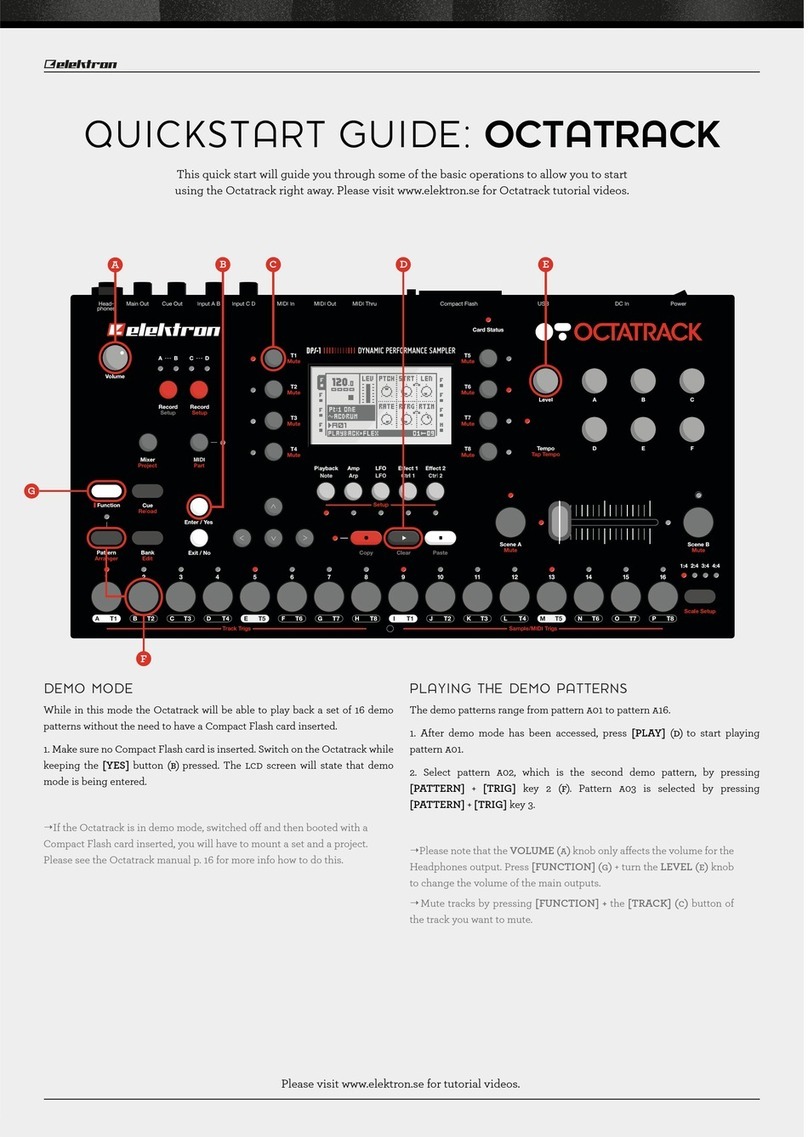
Elektron
Elektron Octatrack User manual

Elektron
Elektron Analog Heat +FX User manual
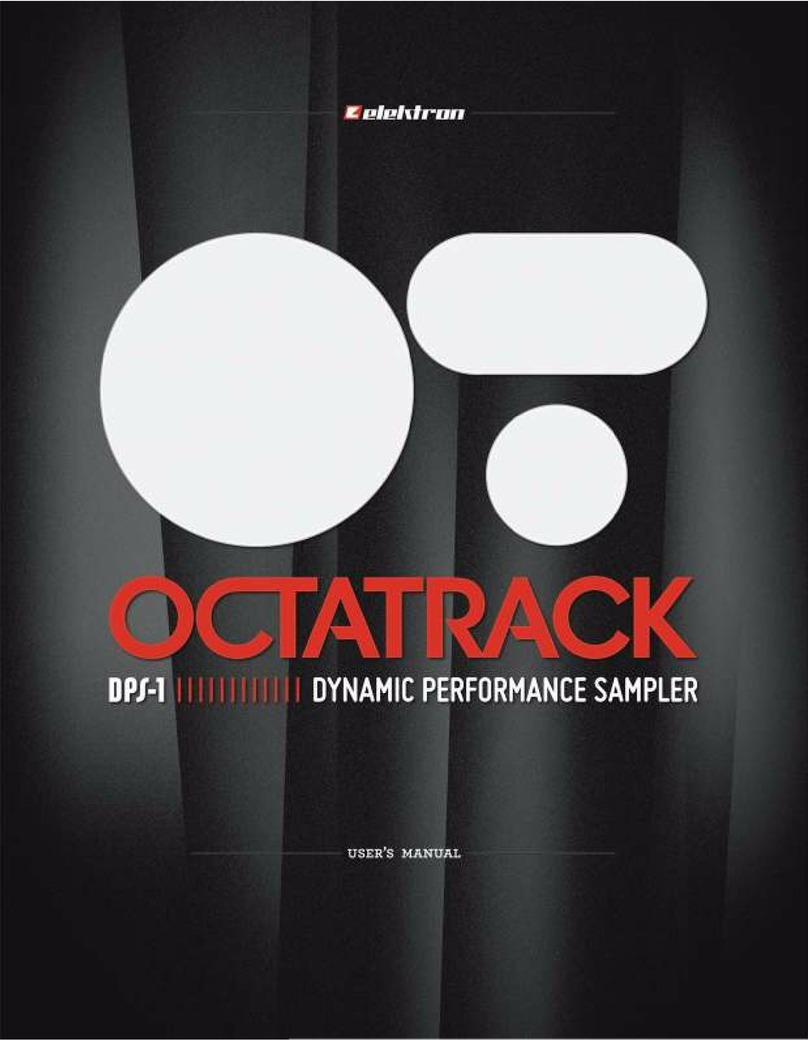
Elektron
Elektron Octatrack DPS-1 User manual
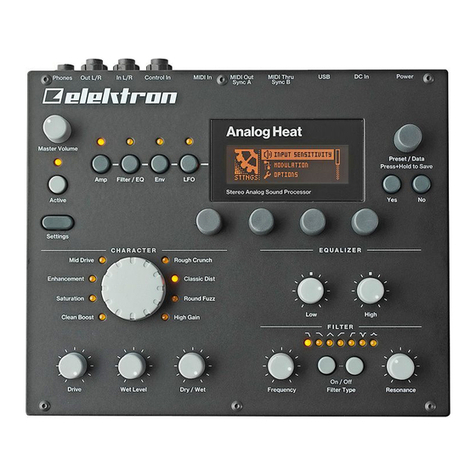
Elektron
Elektron Analog heat User manual
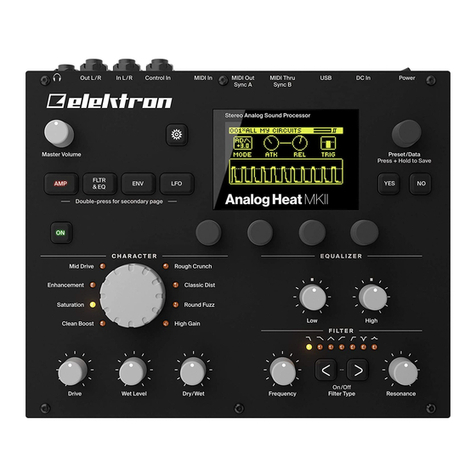
Elektron
Elektron Analog Heat MKII User manual
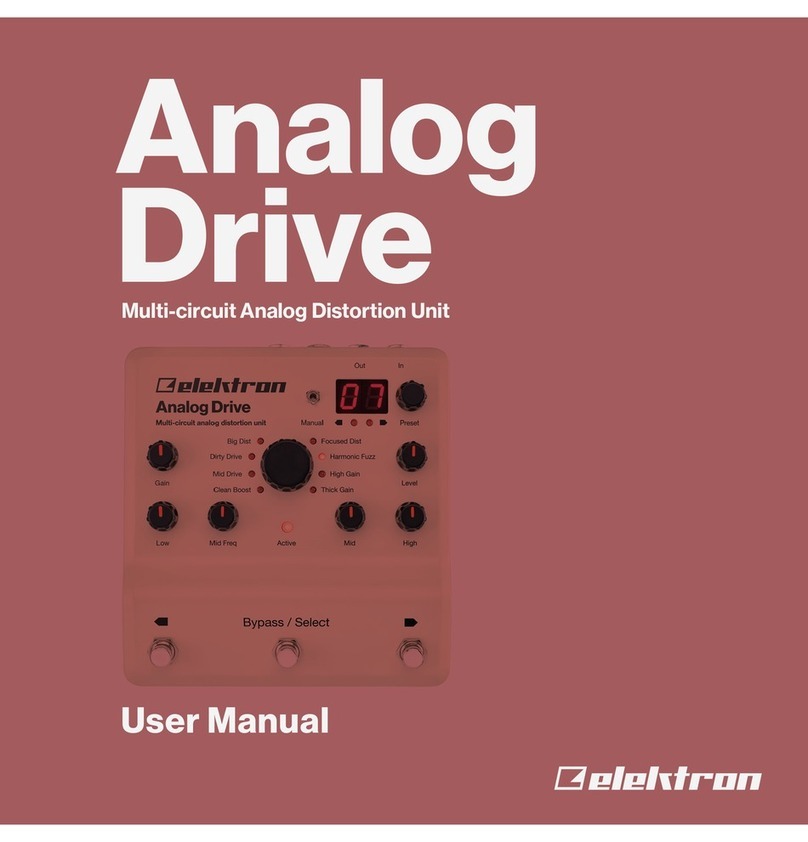
Elektron
Elektron analog drive User manual

Elektron
Elektron Analog Heat MKII User manual
